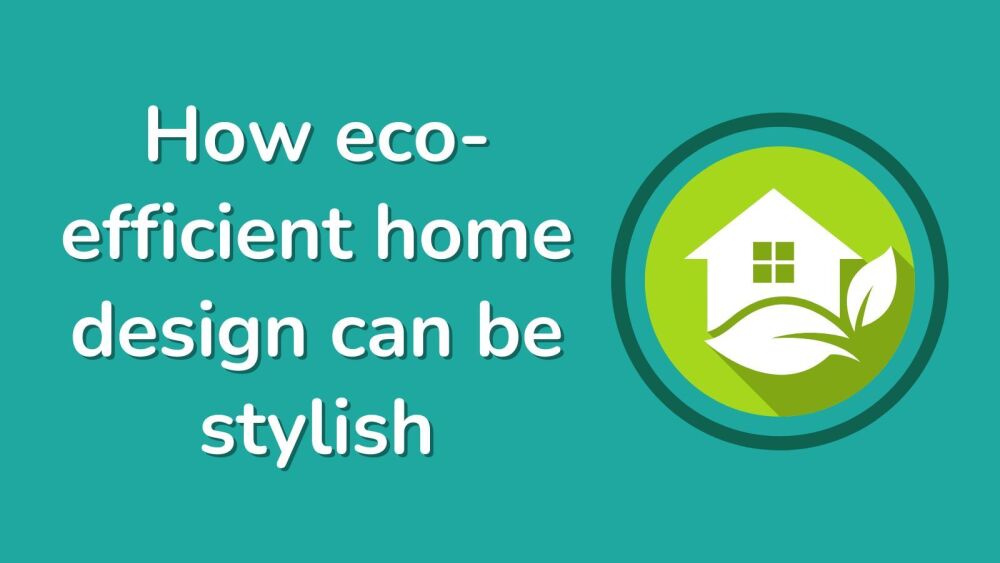Eco-Efficient Home Design Can Be Stylish (As Well As Money Saving)
Posted on
We are fortunate to live in a time where home design is more advanced, functional, and stylish than ever before. From smart home technology to high-performance materials, the choices for creating a comfortable and efficient living space are endless. But one of the most important aspects of modern home design is eco-efficiency—ensuring that our homes are energy-efficient, sustainable, and environmentally friendly.
Many eco-friendly home upgrades not only help the planet but also reduce household bills. While some require an initial investment, they often lead to significant savings in the long run. And the best part? You don’t have to compromise on style to create a sustainable home.

Energy-Efficient Heating and Insulation
One of the biggest ways to improve home energy efficiency is by reducing heat loss. The largest surface areas in your home—walls, floors, and ceilings—play a key role in retaining warmth.
- Thermal wall paint: Special insulating paints with energy-saving properties help reflect heat back into the room, reducing the amount absorbed by walls. This improves heat circulation and allows you to turn the heating down while maintaining a cosy temperature.
- Vegan-friendly insulation materials: Instead of wool-based insulation, consider hemp, cork, recycled denim, or cellulose insulation. These materials are highly effective at retaining heat and improving energy efficiency.
- Double or triple glazing: Investing in energy-efficient windows reduces heat loss and eliminates cold drafts, making your home warmer in winter and cooler in summer.
Sustainable Interior Design
Eco-efficient homes can be just as stylish—if not more so—than conventional designs. Many sustainable materials and energy-efficient upgrades enhance both aesthetics and functionality.
- Sustainable furniture: Choose pieces made from reclaimed wood, bamboo, or recycled materials. These options are durable, beautiful, and environmentally responsible.
- Stone and metal accents: Materials like marble, granite, and steel can create an elegant, modern look while improving thermal mass, meaning they naturally absorb and release heat.
- Rugs and soft furnishings: Adding natural fibre rugs, curtains, and upholstered furniture helps trap heat and reduce reliance on artificial heating.
Maximising Natural Light and Ventilation
A well-lit, airy home feels more inviting and reduces the need for artificial lighting and air conditioning. Making small upgrades to your windows can have a huge impact on energy efficiency, comfort, and aesthetics.
- Custom window replacement: Upgrading to energy-efficient windows helps reduce heat loss in winter and prevents overheating in summer. Custom window replacement allows you to choose double or triple glazing, larger panes for better natural light, and improved insulation properties, all of which contribute to a more sustainable home.
- Large windows and skylights: Installing floor-to-ceiling windows, roof lights, or glass doors increases natural sunlight, cutting down on electricity use during the day.
- Cross-ventilation: Designing your home to allow fresh air to flow through reduces the need for air conditioning and improves indoor air quality.
- Indoor plants: Houseplants not only purify the air but also add a fresh, stylish touch to any room.
Eco-Friendly Habits for a Greener Home
Designing an eco-efficient home isn’t just about materials—it’s also about how you use your space. Small habitual changes can make a big difference.
- Reduce plastic waste: Swap plastic household items for reusable alternatives like glass, stainless steel, or biodegradable materials.
- Use chemical-free cleaning products: Many eco-friendly cleaning products are just as effective as traditional ones without harming the environment.
- Water-saving fixtures: Low-flow taps, showerheads, and dual-flush toilets significantly cut water usage.
- Smart energy use: LED lighting, smart thermostats, and energy-efficient appliances help lower electricity consumption without sacrificing convenience.
Final Thoughts
Creating an eco-efficient home is not just about reducing your carbon footprint—it’s about saving money, improving comfort, and embracing modern, stylish design. Whether you're upgrading insulation, choosing sustainable materials, or adopting energy-saving habits, every small change contributes to a greener, more efficient home.
By combining style and sustainability, you can design a home that benefits both your wallet and the planet. Both alternative housing and modern home design can incorporate eco-efficiency. Living sustainably can and should be stylish.

